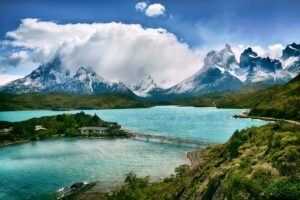Discovering Chile: The Ideal Seasons for Weather, Culture, and Exploration


Chile’s long, ribbon-like shape offers nearly every type of landscape imaginable—from arid deserts to fertile valleys, snowcapped mountains, and icy southern fjords. Because of this geographic diversity, choosing the best time to visit depends on the experiences you’re after. Whether your goal is exploring Patagonia’s rugged peaks, sipping wine under sunny skies, or joining in colorful cultural celebrations, understanding Chile’s seasonal rhythms can help you plan a trip that fits your travel style.
Weather Through the Seasons
Chile’s summer runs from December through February, providing warm temperatures across much of the country. It’s the prime time for trekking in Patagonia, where longer days and milder conditions make hiking more pleasant. Along the coast, beach towns buzz with activity, and the Atacama Desert sees some of its clearest skies for photography and stargazing.
Autumn, from March to May, delivers cooler temperatures and beautiful golden scenery throughout central Chile. This is one of the best periods for exploring Santiago, Valparaíso, and nearby wine regions, where harvest celebrations fill vineyard calendars. The weather remains comfortable, and the thinner crowds make sightseeing and outdoor activities more relaxed and accessible.
Best Time to Visit Northern Chile
Northern Chile, anchored by the Atacama Desert, is known for its consistently dry climate and minimal rainfall. Its stable weather makes it ideal for year-round travel, with sunny days and dramatic landscapes that change in character as the light shifts throughout the day. Summer offers warm days perfect for exploring salt flats, geysers, and desert valleys.
Winter, while cooler, still brings plenty of sunshine and clear skies. Because temperatures drop significantly at night, especially near high-altitude sites like El Tatio, travelers should bring warm layers. Spring and fall strike a comfortable balance, offering moderate temperatures that suit hiking and long days of exploration without the extremes of heat or cold.
Best Time to Visit Central Chile
Central Chile enjoys some of the most pleasant and predictable weather in the country. Spring, from September to November, offers blooming landscapes and mild temperatures that invite travelers to stroll city streets, tour vineyards, and enjoy outdoor cafes. It’s also a great season for exploring the coast, where breezes keep the air fresh and comfortable.
Fall, from March to May, mirrors spring with its moderate temperatures and scenic beauty. This is a favorite season for wine lovers, as vineyards throughout the Maipo, Colchagua, and Casablanca valleys host harvest festivals and celebratory tastings. Summer brings hotter temperatures and more visitors, while winter introduces cooler weather and occasional rain, though it remains a popular period for skiing in the Andes.
Best Time to Visit Southern Chile and Patagonia
Patagonia, known for its dramatic glaciers, deep blue lakes, and windswept plains, is best visited in the austral summer from December to February. This season offers the warmest temperatures of the year and the most stable conditions for trekking in Torres del Paine and other iconic parks. Even then, Patagonian weather is famously unpredictable, so packing layers is essential.
For travelers seeking fewer crowds and stunning natural colors, the shoulder months of October, November, March, and early April are particularly appealing. During these times, wildlife is active, landscapes glow with seasonal hues, and daylight hours remain long enough for extended outdoor adventures. However, some remote areas may reduce services outside the peak season, so travelers should plan ahead.
Festivals and Cultural Celebrations
Chile’s cultural calendar adds excitement and color to any travel itinerary. One of the most important national holidays is Fiestas Patrias, celebrated each September with parades, traditional foods, music, and dancing. The lively atmosphere brings communities together, offering visitors a rich introduction to Chilean traditions.
From December through February, summer festivals take center stage. The Viña del Mar International Song Festival draws global performers and enthusiastic crowds to the coast. In northern Chile, the La Tirana Festival in July showcases Andean heritage through elaborate costumes, religious rituals, and energetic dancing, making it a meaningful event for those looking to experience local culture firsthand.
Essential Travel Tips for Chile
Because Chile spans so many climates, smart packing can make your trip much more comfortable. Layers are indispensable, especially if you move between high elevations, coastal regions, and southern landscapes. Sunscreen, sunglasses, and reusable water bottles are helpful year-round due to strong sunlight and dry conditions in many regions.
Transportation within Chile is efficient, with airlines offering frequent flights between major regions. Renting a car works well for exploring wine country or remote Patagonian areas, though weather updates are important during winter or shoulder seasons. Travelers planning to visit during popular times, such as summer holidays or major festivals, should reserve accommodations and tours early to secure the best options.
Final Thoughts
Chile’s range of climates, natural wonders, and cultural traditions means there’s no single perfect time to visit—only the perfect time for the kind of experience you want. Whether you’re chasing mountain adventures, savoring fine wines, discovering desert landscapes, or celebrating alongside locals, planning your trip around seasonal highlights ensures a smooth and memorable journey. Whenever you go, Chile’s beauty and diversity make it an unforgettable destination.

